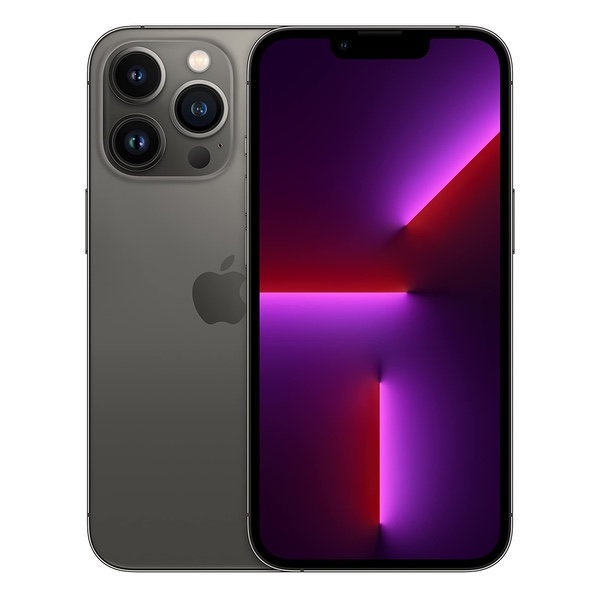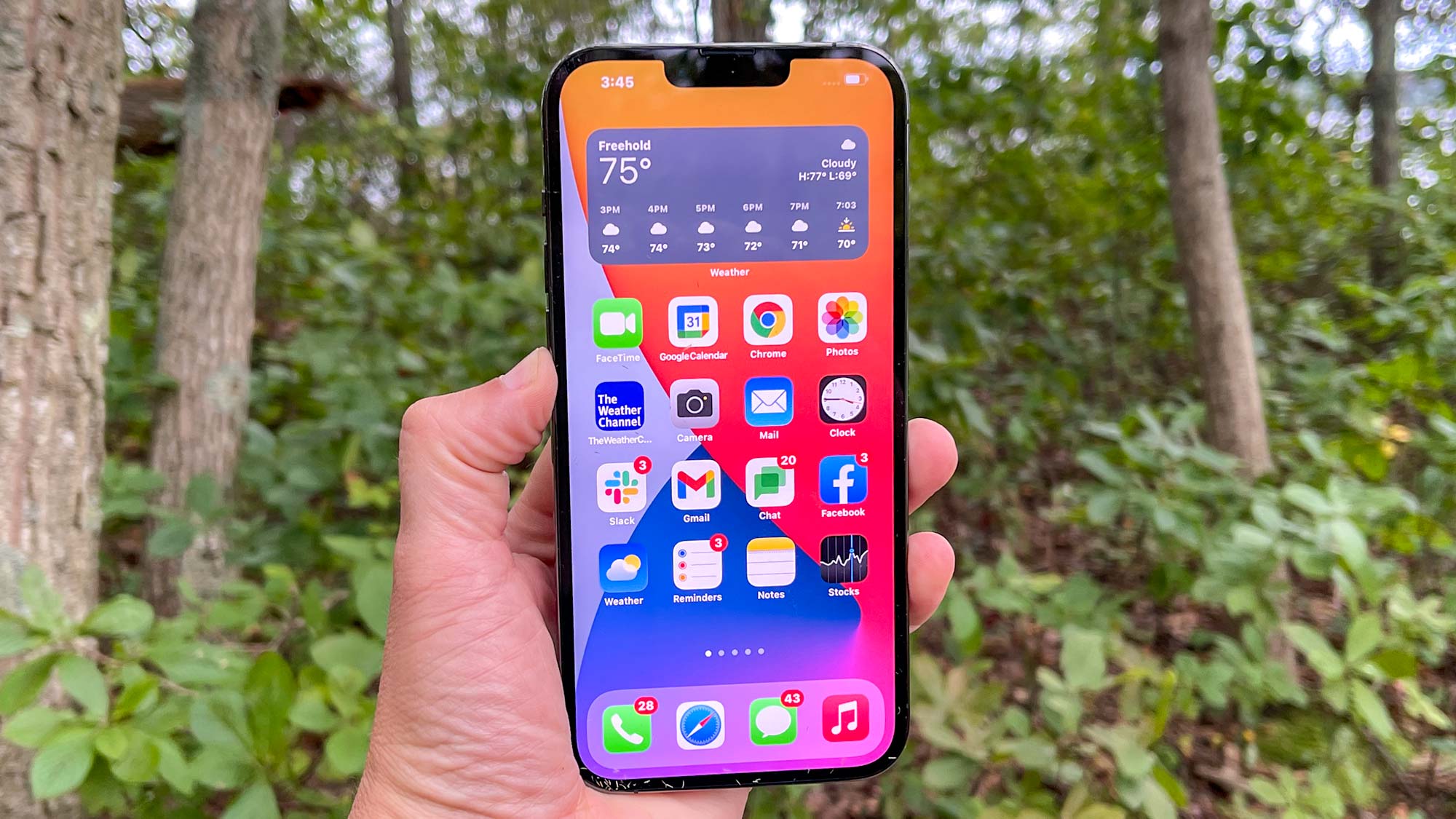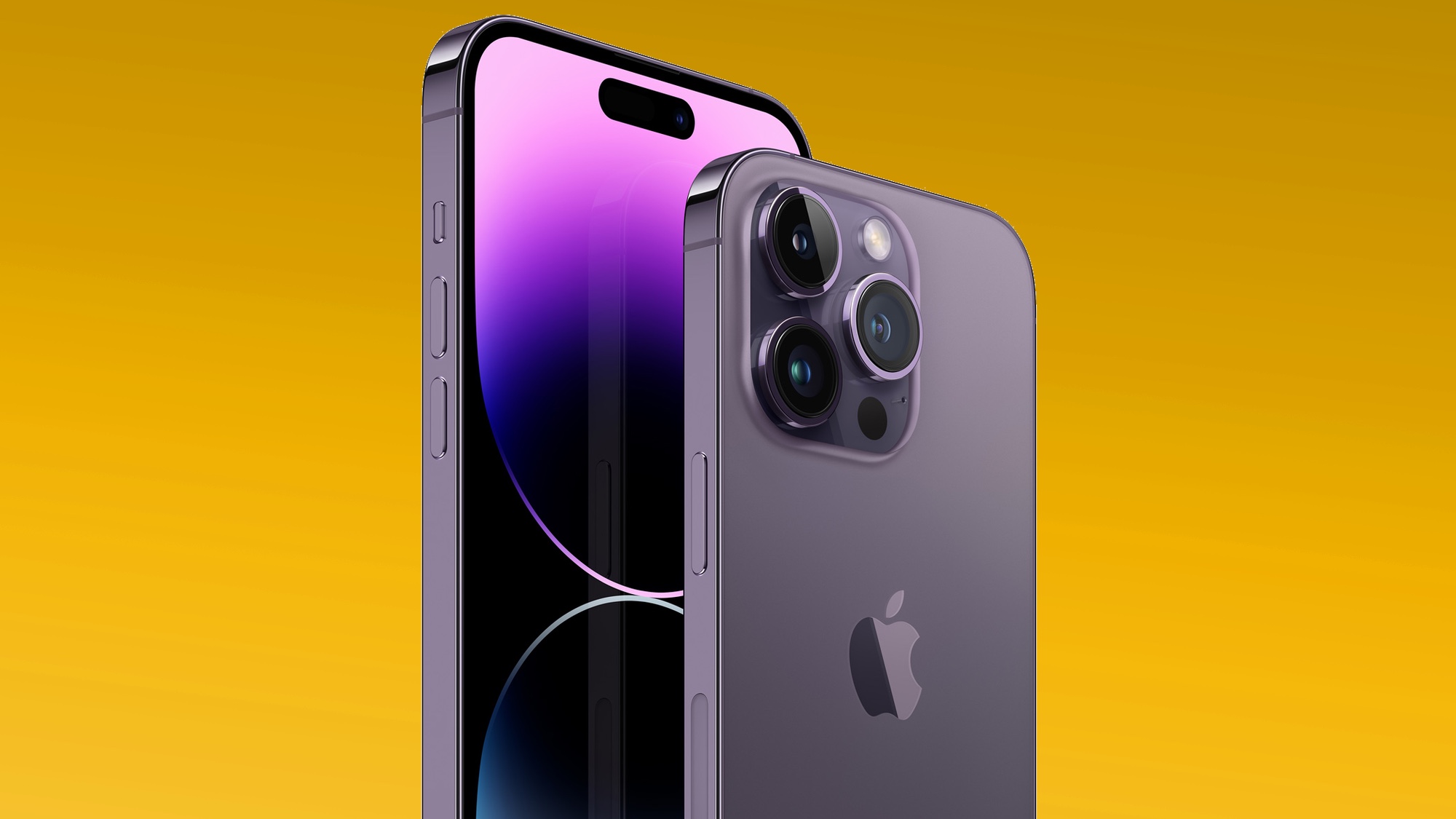iPhone 14 Pro vs iPhone 13 Pro: Biggest upgrades
Here's how the 2022 iPhone Pro compares to its predecessor

Apple's latest Pro model makes some significant changes from before, with the Dynamic Island feature replacing the notch and adding new functionality with alerts and Live Activities. The cameras also see improvement with a 48MP main sensor, and the performance from the A16 Bionic chipset is second to none. Battery life did take a step back in our testing.
For
- Dynamic Island is a good notch replacement
- Strong performance
- Stunningly beautiful display
- Incredible cameras
Against
- No SIM tray may bother some
- Photonic Engine can get a bit aggressive
- Worse battery life than last year

Though it's the older of these two phones, the iPhone 13 Pro remains a very capable phone. It lasts longer than its successor on a charge, and the A15 Bionic remains a top-performing chipset. Even without the 48MP camera, you'll get excellent photos from the iPhone 13 Pro.
For
- Gorgeous and bright 120Hz display
- Incredible performance
- Spectacular cameras
- Vastly improved battery life
Against
- Fast charging limited to 20W
- 4K ProRes video limited to 256GB and above
It's 2025 but both the iPhone 14 Pro and iPhone 13 Pro could still be worth buying or holding onto if you're looking into upgrading.
The iPhone 14 Pro adopts some of the top features from the older iPhone 13 Pro — including 120Hz displays and telephoto cameras — but there is a lot more awaiting anyone who upgrades to the iPhone 14 Pro. Top changes include the Dynamic Island, an Always-On display, a 48MP main camera and the A16 Bionic chip.
Check out our review of the iPhone 16 Pro if you want to know about Apple's latest Pro iPhone. But stick around here if you're still curious as to the winner of iPhone 14 Pro vs. iPhone 13 Pro.
iPhone 14 Pro vs. iPhone 13 Pro price
With debut prices of $999/£949 and $1,099/£1,049 respectively, the iPhone 13 Pro and iPhone 13 Pro Max were already pretty expensive phones. In the U.S. at least, those prices didn't go up with the arrival of the iPhone 14 Pro and iPhone 14 Pro Max.
However, for U.K. buyers, the phones have gotten more expensive. The iPhone 14 Pro starts $999/£1,099, which is around £150 more than the previous model cost for U.K. customers. Similarly, the iPhone 14 Pro Max starts at $1,099/£1,199, again showing a markup in UK pricing.
Apple no longer sells the iPhone 13 Pro or iPhone 14 Pro now that the iPhone 15 Pro models are available. That won't stop you from finding the older phones from third-party retailers, and perhaps at a good discount too. But supplies are only going to decrease with time.
iPhone 14 Pro vs. iPhone 13 Pro design

One of the most obvious changes from the iPhone 13 Pro is the display notch has been replaced by the Dynamic Island on the iPhone 14 Pro. It's essentially an interactive box around the pill-shaped Face ID and front camera cut-out that changes size and form based on different notifications, alerts and activities.
Sign up to get the BEST of Tom's Guide direct to your inbox.
Get instant access to breaking news, the hottest reviews, great deals and helpful tips.
While the iPhone 13 series reduced the size of the Face ID notch for the first time since its introduction on the iPhone X, the iPhone 14 Pro's new variable-sized island will give back more screen real estate to actual pixels, making it less obstructive when using an app in fullscreen mode.

We had thought there would be a more obvious new look for the back of the iPhone 14 Pro too. But it's basically the same as the iPhone 13 Pro, with the now-familiar triple lens camera mount.

The iPhone 14 Pro still has a Lightning port rather than a USB-C port for power and data transfer too. That's probably going to change with the iPhone 15, due to changes in the law in the EU. Apple has already confirmed that it'll eventually switch over to USB-C — it hasn't confirmed when — but that doesn't impact the iPhone 14 Pro or the iPhone 13 Pro.
On the side of the iPhone 14 Pro you'll notice a distinct absence of a SIM tray — this is because Apple have decided to restrict the iPhone 14 Pro to eSIMs in the U.S., which has numerous benefits.
Firstly, the removal of the SIM tray gives designers more space to work with internally, allowing more features to be added. Secondly, it's one less point of failure to consider when waterproofing. Finally, eSIMs give users more flexibility with network carriers, allowing multiple SIMs to be added without taking up extra space and also making it easier to switch network provider, which comes in especially handy when travelling.
In regions where eSIMs are already commonplace, such as the U.K., this move likely won't be an issue, as many carriers offer eSIMs already to both new and existing customers. In regions where eSIMs are not as widely used, however, it could cause headaches and restrict consumer choice.
For colors, you'll initially be able to select the iPhone 14 Pro and Pro Max in Space Black, Silver, Gold or Deep Purple. All feature a matte glass textured back.
iPhone 14 Pro vs. iPhone 13 Pro display
Once again, the iPhone Pro models feature a 6.1-inch display, and the Pro Max version sports a 6.7-inch display. You're actually getting more screen on the iPhone 14 models, however, since the bezels are smaller.

The iPhone 13 Pro and iPhone 13 Pro Max introduced ProMotion adaptive 120Hz displays to the iPhone for the first time, allowing for a display that's both smoother and more power efficient.
Apple have given the iPhone 14 Pro and Pro Max the same capability, and then some. While the new iPhone Pro models can still reach refresh rates of up to 120Hz, they can also scale back down to 1Hz, as opposed to the 10Hz minimum of the iPhone 13 Pro models. This lower minimum refresh rate will make the iPhone 14 Pro models more power efficient as they operate more slowly than their predecessors when required.
There's a brightness difference between the iPhone 14 Pro and iPhone 13 Pro that will make the new models much more visible outdoors. The 14 Pro also has a slightly wider and more accurate color gamut too.
| Row 0 - Cell 0 | iPhone 14 Pro | iPhone 13 Pro |
| Peak brightness (nits) | 1,448 | 1,024 |
| DCI-P3 color gamut coverage (%) | 84.8 | 82.5 |
| Color accuracy (∆e, lower is better) | 0.25 | 0.27 |
The iPhone 14 Pro's display also enables the Always-On display, which you may have encountered in Apple Watches. This will let you see widgets like those you can add to your lock screen in iOS 16 on your phone even when it's locked, allowing for convenient updates at a glance and in full color, without a huge detriment to battery life.
iPhone 14 Pro vs. iPhone 13 Pro cameras
The iPhone 13 Pro uses 12MP sensors for all four of its cameras. But the iPhone 14 Pro comes with a 48MP sensor on the main camera, for higher resolution images.
The iPhone 13 Pro models feature a wider maximum aperture of f/1.5 on the main camera versus f/1.78 on the iPhone 14 Pro, meaning the older models are theoretically capable of producing brighter images. However, with a much larger sensor, upgraded image stabilization and Apple's new Photonic Engine image processor, the iPhone 14 Pro produces better shots overall.
You can see the difference even more starkly in night mode, as this comparison shows.
The new quad pixel sensor also allows a 2x telephoto zoom mode, meaning you'll have more flexibility with your zooming and framing in 12MP mode.

While ProRAW photos were available to iPhone 13 Pro users, thanks to its huge sensor, the iPhone 14 Pro offers ProRAW files in uncompressed 48-megapixels, which means they'll be huge and absolutely packed full of image data to manipulate. If you're a fan of having ultimate control over your images in post-production, then the iPhone 14 Pro has the camera for you, as this hands-on with the 48MP ProRAW feature indicates.
In terms of video, there's no 8K support as had been rumored in the build-up to last fall's phone release. But the iPhone 14 Pro can shoot 4K at 24 fps, 25 fps, 30 fps and 60 fps, just as you'd find on the iPhone 13 Pro. The difference between the two is that 4K/24 fps is now available in Cinematic mode on the iPhone 14 Pro.
Apple touts this as a professional feature, given 24 fps is a widely used frame rate by filmmakers looking to craft cinematic video. However, this isn't really as big of a deal as Apple is making out. Pro cinematographers still probably won't be using their iPhone over their Arri, and the iPhone 13 Pro still shoots at 4K/24 fps in normal video modes. It does give users of the iPhone 14 Pro some extra creative freedom when crafting stylized, cinematic feeling video, though.

Meanwhile on the front, the iPhone 14 Pro has a slightly upgraded selfie camera, with a brighter maximum aperture of f/1.9 versus f/2.2 on the iPhone 13 Pro. It also uses the new Photonic Engine image processor to make for brighter and sharper selfies, like the one you can see here.
If you're interested in seeing more comparisons, have a look at our full iPhone 14 Pro vs. iPhone 13 Pro camera shootout.
iPhone 14 Pro vs. iPhone 13 Pro chip and performance
The new A16 Bionic chipset runs the show inside the iPhone 14 Pro, an upgrade on the iPhone 13 Pro's A15 Bionic. This new silicon won't be featured in either the standard iPhone 14 or iPhone 14 Plus. Instead, those models use the same A15 Bionic chip as the iPhone 13 Pro.
The A15 Bionic features a 6-core CPU, 5-core GPU and a 16-core neural processor. This makes the gap between the iPhone 14 and 14 Pro larger than previous years, but performance-wise means that the lower tier iPhone 14 models should be comparable to the iPhone 13 Pro and Pro Max (without all the bells and whistles like high refresh rates and Pro camera technology, though).

Built on a 4-nanometer architecture, the A16 chip in the iPhone 14 Pro offers more transistors than the 5-nanometer design of the A15 Bionic. This essentially means it can use more transistors in the same amount of space, increasing performance and efficiency over its predecessor. In fact, Apple claims that the A16 uses 20% less power than the A15, which will improve battery life, and that it is up to 40% more powerful than the rivals; think the Qualcomm Snapdragon 8 Gen 1.
According to our iPhone 14 Pro benchmarks, the A16 chip beats the A15 by a considerable margin on the CPU-heavy portions of the test, but the GPU and video transcoding tests are closer, if not identical in a couple of places.
| Row 0 - Cell 0 | iPhone 14 Pro | iPhone 13 Pro |
| Chipset | A16 Bionic | A15 Bionic |
| Geekbench 5 score (singe-core / multi-core) | 1891 / 5469 | 1733 / 4718 |
| 3DMark Wild Life Unlimited (fps) | 74 | 70 |
| 3DMark Wild Life Extreme Unlimited (fps) | 19 | 19 |
| Adobe Premiere Rush time to transcode (mins:secs) | 0:26 | 0:26 |
The iPhone 13 Pro still likely has all the power you'd want from a phone, but if you need the ultimate in performance, the iPhone 14 Pro is unquestionably what you're after.
The iPhone 14 Pro offers the same storage capacities as the iPhone 13 Pro: 128GB as standard, with the option to upgrade to 256GB, 512GB or 1TB.
iPhone 14 Pro vs. iPhone 13 Pro battery
Both iPhone 13 Pro models made it onto our best phone battery life list — they've since dropped out, as we remove phones 18 months after their debut. Only one of the new iPhone 14 Pro models was able to supplant its predecessor.
On our usual constant web-browsing test over 5G, the iPhone 13 Pro lasted for 12 hours and 18 minutes, while the iPhone 14 Pro lasted 10 hours and 13 minutes. That's still an above-average result for the iPhone 14 Pro, but it's a fairly considerable battery life slip from its predecessor, possibly due to the always-on display. In fact the reduced battery life was bad enough for one TG writer to swap back to their old iPhone.
As for the Pro Max models, the iPhone 13 Pro Max managed 12 hours and 16 minutes on a single charge on the same test as before. The iPhone 14 Pro Max got to 14 hours and 42 minutes, meaning it earns its place on the best battery life guide.

There isn't any upgrade to the 20W charging found on the iPhone 13 Pro Max, which we were hoping for but weren't optimistic we'd see. The charging speeds seem a little quicker since last year though, with the iPhone 13 Pro and iPhone 13 Pro Max charging to 53% and 40% in half an hour respectively, with the iPhone 14 Pro and iPhone 14 Pro Max managing 57% and 42% instead in the same thirty minutes.
iPhone 14 Pro vs. iPhone 13 Pro software
Though the iPhone 13 Pro launched with iOS 15, and the iPhone 14 Pro with iOS 16, both phones can now be upgraded to iOS 18. Neither phone can use Apple Intelligence, but other parts of the update like a redesigned Photos app, topographic maps in Maps, new customization options for Control Center and the home screen.
Apple normally updates iPhones with full iOS versions for five years after launch. That means the iPhone 13 Pro should reach the end of its update path a year before the iPhone 14 Pro, although Apple has broken its patterns before.
iPhone 14 Pro vs. iPhone 13 Pro outlook
The update from iPhone 13 Pro to iPhone 14 Pro was pretty dramatic. In previous years, we've only seen incremental changes from one Pro model to the next.
With the iPhone 14 Pro, however, Apple was generous (or at least as generous as it can be when the phones cost as much as they do) with the upgrades. The new Dynamic Island, 48MP camera, improved chipset and always-on display certainly set the iPhone 14 Pro apart from its predecessor, and aside from a price increase in some regions, there doesn't look to be any drawbacks versus the outgoing models.

We'd still recommend checking out the iPhone 16 Pro if your budget can allow for Apple's latest and greatest. But otherwise, it's going to be a question of overall features or overall value when picking between the iPhone 14 Pro and iPhone 13 Pro. And that's something you'll ultimately have to figure out yourself!
Is there any difference between iPhone 14 Pro and iPhone 13 Pro?
In a nutshell, the iPhone 14 Pro uses a more powerful chipset and has a higher resolution main camera than the iPhone 13 Pro, but the 13 Pro offers slightly better battery life, and could be cheaper to buy if you still find it in stock.
The 14 Pro also features a Dynamic Island cutout instead of a regular notch, and an always-on display feature that you won't find on the 13 Pro. The 13 Pro still has a SIM tray for physical SIM cards though.

Richard is based in London, covering news, reviews and how-tos for phones, tablets, gaming, and whatever else people need advice on. Following on from his MA in Magazine Journalism at the University of Sheffield, he's also written for WIRED U.K., The Register and Creative Bloq. When not at work, he's likely thinking about how to brew the perfect cup of specialty coffee.
- Peter WolinskiReviews Editor
You must confirm your public display name before commenting
Please logout and then login again, you will then be prompted to enter your display name.
